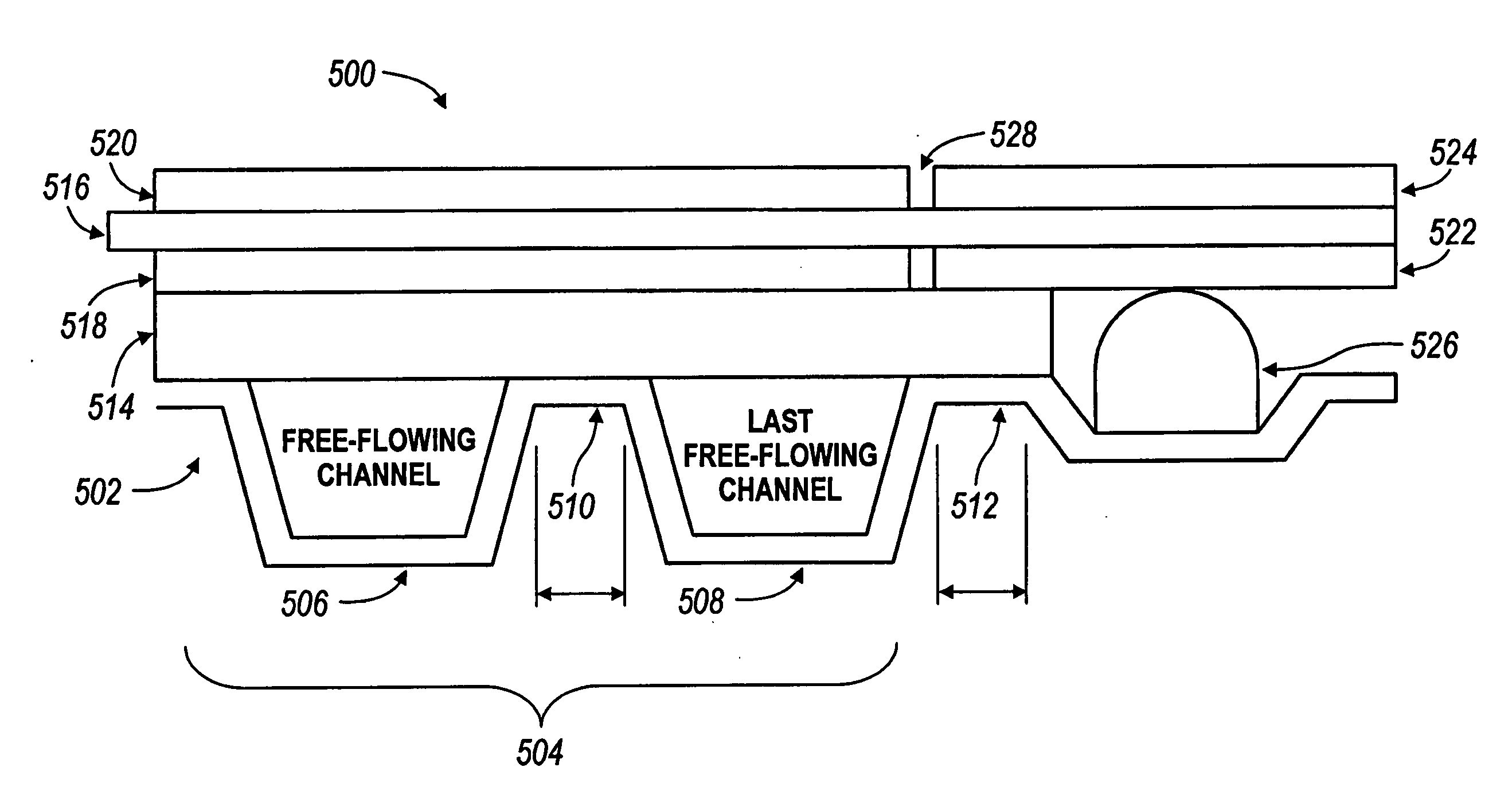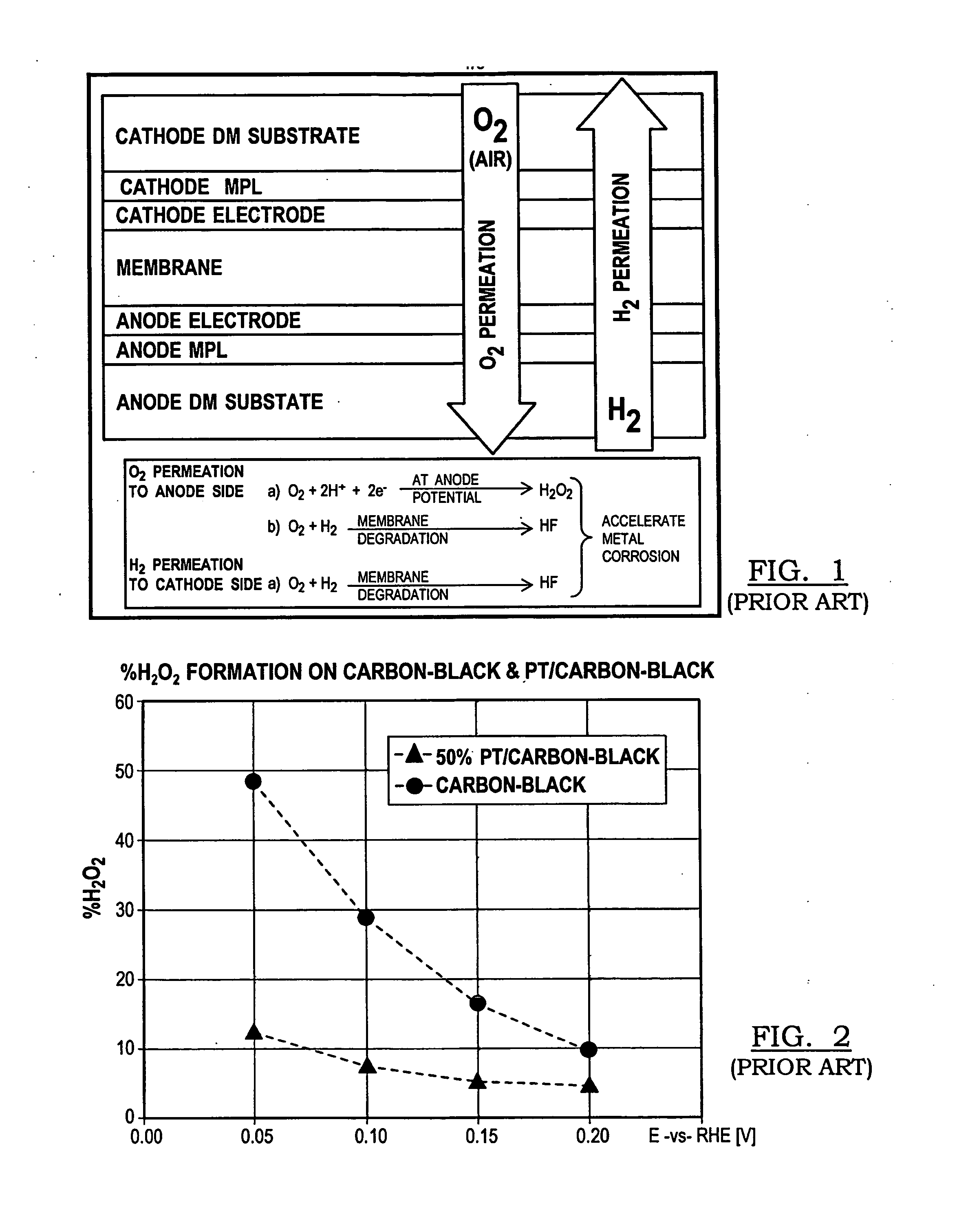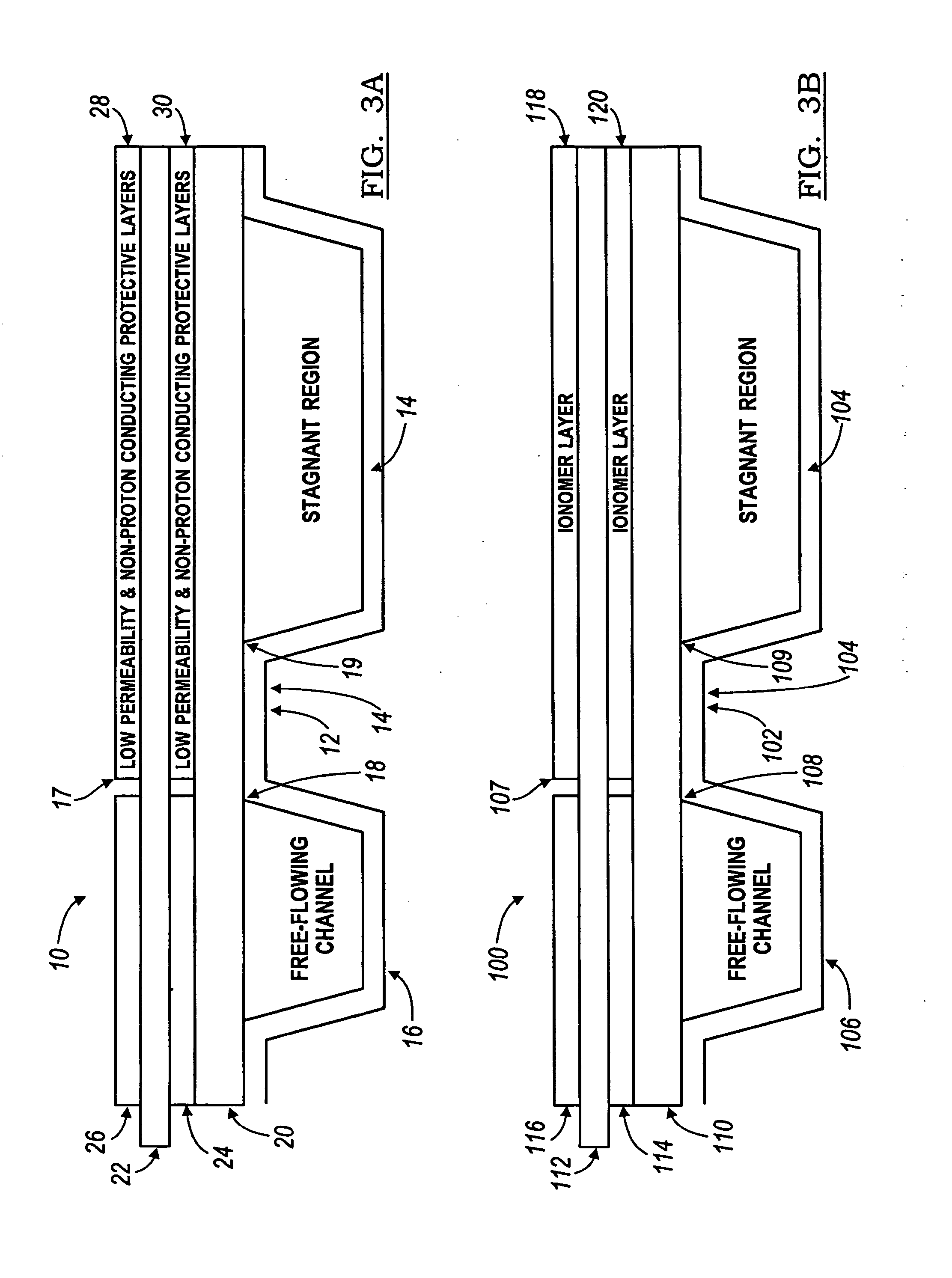Design strategies for corrosion mitigation
a technology of membrane electrodes and corrosion mitigation, which is applied in the direction of cell components, sustainable manufacturing/processing, and final product manufacturing, etc., can solve the problems of affecting the function and/or affecting the efficiency of the fuel cell, and consuming precious metals
- Summary
- Abstract
- Description
- Claims
- Application Information
AI Technical Summary
Benefits of technology
Problems solved by technology
Method used
Image
Examples
Embodiment Construction
[0032] The following description of the preferred is merely exemplary in nature and is in no way intended to limit the invention, its application, or uses.
[0033] In accordance with the general teachings of the present invention, systems and methods are provided to eliminate or at least reduce the incidence and / or degree of bipolar plate corrosion, especially of those bipolar plates comprised of stainless steel, as well as the elimination or reduction of surface coating degradation (e.g., metal oxides and / or organic coatings (e.g., silicon oxide and / or the like).
[0034] By way of a non-limiting example, all areas of the active area of the MEA (i.e., areas which contain proton-conducting membrane, Pt / C catalyst, other fuel cell electrocatalysts known in the art (e.g., Pt alloys / C), and MPL) should have adjacent flow-field channels on both the anode and the cathode side which have actively driven reactant flow, i.e., there must be no stagnant regions like dimples (created by some bipo...
PUM
| Property | Measurement | Unit |
|---|---|---|
| RH | aaaaa | aaaaa |
| electrode potentials | aaaaa | aaaaa |
| conductive | aaaaa | aaaaa |
Abstract
Description
Claims
Application Information
 Login to View More
Login to View More - R&D
- Intellectual Property
- Life Sciences
- Materials
- Tech Scout
- Unparalleled Data Quality
- Higher Quality Content
- 60% Fewer Hallucinations
Browse by: Latest US Patents, China's latest patents, Technical Efficacy Thesaurus, Application Domain, Technology Topic, Popular Technical Reports.
© 2025 PatSnap. All rights reserved.Legal|Privacy policy|Modern Slavery Act Transparency Statement|Sitemap|About US| Contact US: help@patsnap.com



